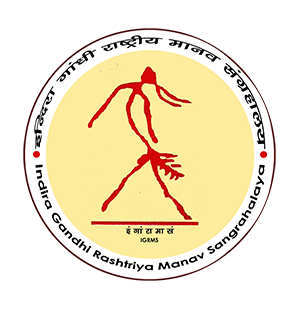’’डोकरा’’ (पीतल गलाकर आकृति बनाने की पारम्परिक तकनीक)
समुदायः कर्मकार
जिला- बांकुड़ा
राज्य- पश्चिम बंगाल
ढोकरा लोस्ट वैक्स तकनीक के स्तेमाल से धातु ढलाई की एक प्रचीन कला है। यह तकनीक बांकुड़ा के पश्चिम बंगाल में प्रचलित प्राचीनतम कलाओं में से एक है। इस तकनीक से ढोकरा कलाकार हिन्दु अथवा जनजातीय देवी-देवताओं की मूर्तियाँ, अनाज मापक व आभूषण गढ़ते थे किन्तु अब मानव, देवी-देवताओं की मूतियाँ, घोड़े के साथ घुड़सवार, संगीतकार, हाथी, सबारी के साथ हाथी, मोर, उल्लु एवं कई सजावटी वस्तुऐं बनाते हैं।
लोस्ट वैक्स तकनीक में छः चरण शामिल हैः
(1) अंर्तभाग निर्माण- अंर्तभाग स्थानीय मिट्टी से बनाया जाता है। मिट्टी को बोरे से छानकर और सुखाकर रेत या बालु के चूर्ण के साथ मिलाकर अंर्तभाग निर्माण योग्य बनाया जाता है फिर उसे तीन-चार दित तक धीरे-धीरे धूप में सुखाते हैं।
(2) प्रतिरूपण- अंर्तभाग के ऊपर मोम से बांछित अंतिम रूप की मोटाई के अनुरूप मोम से विस्तृत आकार तैयार किया जाता है किन्तु बिकना के कर्मकार साल वृक्ष से प्राप्त वनस्पतिक गाद ‘‘धूना‘‘ को सरसों के तेल के साथ मिलाकर उपयोग करना पसंद करते हैं।
(3) सांचा बनाना- मोम के प्रतिरूप को मिट्टी की पतली पर्त से ढका जाता है जो प्रतिरूप के प्रत्येक विवरण की छाप को ले लेता है। जव यह परत सूख जाती व कड़क हो जाती है तब सांचे पर और कई परतें चढ़ाई जाती हैं। सांचे के ग्रीवा भाग पर पिघली हुई धातु डालने के लिये एक या अधिक नलिकायें बनाई जाती हैं।
(4) मोम रहित करना- मोम को पिघलाने और पिघली हुई मोम को निकालने के लिये सांचे को पहले गरम किया जाता है। यह सांचे के भीतर निर्मित की जाने वाली कलाकृति के आकार और माप के अनुरूप खाली स्थान छोड़ देते हैं।
(5) ढलाई- इस खाली स्थान में पिघली हुई धातु डाली जाती है और ठंडा होने के लिये छोड़ देते हैं।
(6) परिष्करण- सांचे को तोड़कर कलाकृति बाहर निकाल ली जाती है। चिपके हुऐ पकी मिट्टी के कण हटाकर सतह पर से दाग धब्बों की मरम्मत कर दी जाती है। घिसाई के लिये कलाकार गाय के गोबर का उपयोग करते हैं जिसके कारण इसमें पीलापन आ जाता है।
“Dokra Craft” (Traditional Lost-Wax Casting Technique)
Community : Karmakar
District: Bankura
State: West Bengal
Dokra is non ferrous metal casting using the lost- wax casting technique. The technology is one of the oldest forms of craft that is still practiced in Bankura of West Bengal. In this technique Dokra artists cast the images of Hindu or tribal god and goddesses. Measuring bowls, ornaments earlier but now –a day cast figures of people or deities, riding elephant, musicians, horse riders, elephants, peacocks, owls, lamps, and many more decorative items. Lost wax technique involves six stages:
(1) Core making – Cores are made from the local clay. The clay is dried sieved through sacking them mixed with uncrushed sand and used to make suitable core –figures. The cores are slowly sun dried over three or four days.
(2) Modelling – A detailed wax model is built-up around the core, to the thickness of metal desired in the finished object but the Bikna Karmkars prefer to use ‘Dhuna’ which is based on a natural plant resin extracted from the Sal tree mixed with mustered oil.
(3) Moulding- The wax model is coated with a thin layer of very fine clay, which aril form an impression of every details of the model. When this layer is dry and hard, further layers of clay are added to the mould. One or more pouring channels are provided through which molten metal can rim to fill the mould.
(4) De-waxing – The mould is pre heated to melt the wax and the molten wax is poured out. This leaves a cavity which has the exact size, shape and surface contours of the intended artefact.
(5) Casting- Molten metal is poured into the cavity and the mould left to cool.
(6) Finishing- The artefact is broken out of the mould. Traces of backed clay are removed and surface blemisher and detects repaired. The artist use cow dung for grinding the figures, due to which yellow colour like emerges.



